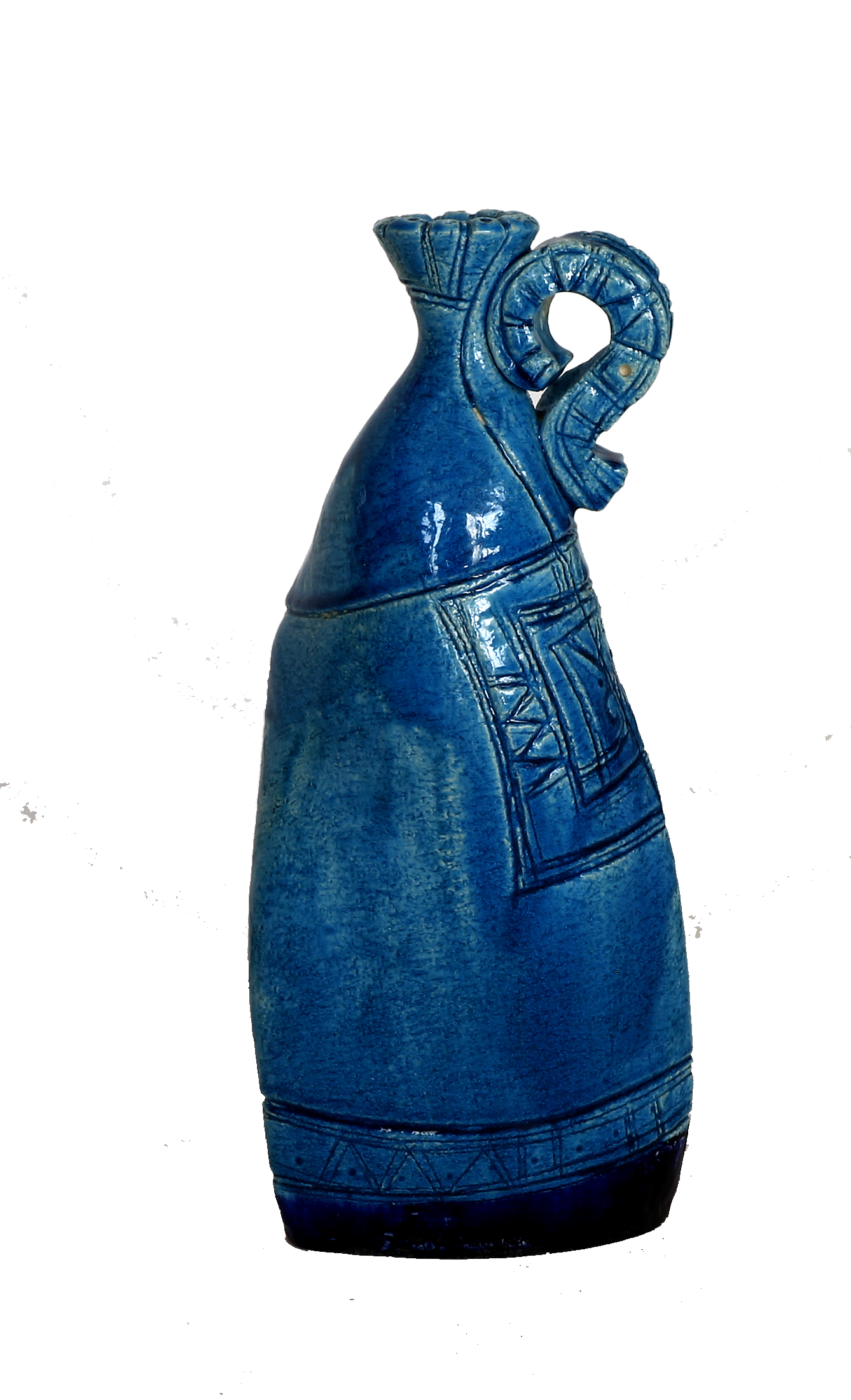CLAY WORK
In clay, I bond with cathartic earth to heal and be healed, craving serenity and order amid restlessness and chaos. From the ancient Sumerian Cuneiform and Uruk’s Cylinder Seals to the calligraphy and geometric patterns of Islam, to Jewad Selim’s Monument of Freedom, Richard Serra’s Snake, Tony Crag’s I’m Alive, Gordon Baldwin’s Seferis, and Zaha Hadid’s commanding architecture, I draw inspiration. I aim to produce innovative work that celebrates thoughts, influences and conversations, current yet stretching as far back as time itself. It is this tension between opposites that I find captivating and intriguing.
2009 Yalli Imdhai' Wattan • Earthstone and velvet glaze 45cm. Private Collection Turin Italy.
2008 Al-Melik Al-Qud’dous ‘The King The Most Sacred' Asma Allah al-Husna • Earthstone gold 12(h)x49(d)cm.
2008 Aziza al-Baghdadia • Earthenware, turqoise glaze and cobalt oxides 40cm (height). Private Collection Paris.
2008 Ainaki Ghabeta Nekheel II • Earthstone, amber glaze and 24K gold 29x40x10cm. Inspired by the famous poem “أنشودة المطر” (Rain Song) by the late Iraqi poet Bader Shaker al-Say'yab, with inscriptions of its opening verses. In this poem, he combines his personal tragedy and the sociopolitical tragedy of his beloved homeland, Iraq. His words are as relevant today as the day they were written.
2008 Asma Allah al-Husna is a clay project in which Faraj specifically draws upon a method of Mesopotamian printmaking dating as early as 5000BC. “This awareness of her cultural heritage grounds her practice in ‘the evolutionary thread of art in Iraq’ to quote Lorna Selim. The personal, intimate nature of her sculpture creates an atmosphere of accessibility and openness, allowing new viewers with no previous knowledge of Iraqi history or art to join that same dialogue with ease. And ultimately, this fusion of ancient and contemporary is well-suited to Faraj’s aspiration to contribute, through her art, to defining the identity of a culture and a people.”
Further information and selected examples of ceramics by Maysaloun Faraj are featured in this catalogue.





